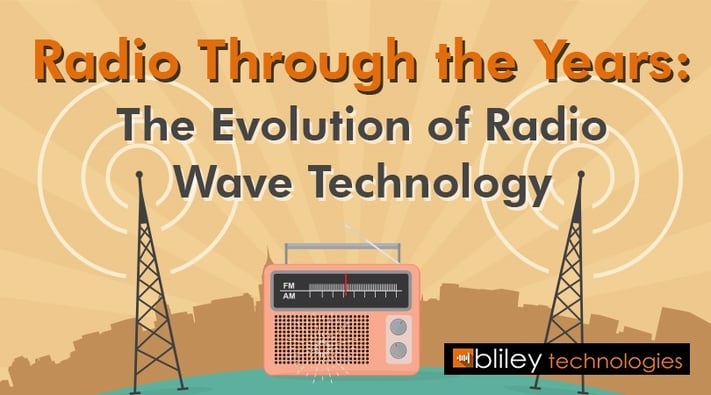
So much of what defines our modern lives is made possible through radio wave technology, which has changed the world in ways the first researchers could never have anticipated. But where did anyone get the idea that radio waves existed in the first place, and that they could be harnessed for wireless communication? It’s a fascinating story that continues to unfold to this day. Let’s go back to the beginning to understand how this technology has evolved.
Early Discoveries in the History of Radio Wave Technology
Research into electricity and magnetism dates back to the 1700s, but no one was ever able to put the whole picture together of how electromagnetism worked until James Clerk Maxwell published his Treatise on Electricity and Magnetism in 1873. It was the first time anyone laid out a solid, mathematical case for the existence of electromagnetic waves. A few years later, German physicist Heinrich Hertz proved Maxwell’s ideas through experimentation. Hertz, however, never grasped the full potential of his discoveries. His interest in the matter was purely academic. When asked what his discovery meant, he responded: “It’s of no use whatsoever”. (Source)
If only he had lived a little longer. In 1894, the same year Hertz died, an Italian inventor named Guglielmo Marconi was conducting experiments in his attic to harness the power of radio waves. Shortly thereafter, he relocated to England to begin public demonstrations of the first functional radio systems, successfully using radio wave technology to wirelessly transmit telegraph messages. This culminated in a successful wireless demonstration across the English Channel in 1899.
However, Marconi had much bigger ambitions. He wanted to make wireless transatlantic communication a reality. At the time, undersea cables were primarily used for transatlantic telegraphy, but these cables were expensive and could be easily cut. Marconi knew that wireless radio wave technology had the potential to revolutionize global communication, but he had to first demonstrate that it was viable over long distances. With the help of his scientific advisor John Ambrose Fleming— a former student of Maxwell’s— he began construction of the world’s first long-distance wireless telegraphy station at Poldhu, in southwestern England. The goal was to transmit signals to a receiving station they had built in Newfoundland, Canada. After several weeks of trial and error, Fleming succeeded in transmitting the message to Marconi, who was waiting on the other side in Canada, in 1901. However, they were still a long way from having a viable long-distance wireless system.
Fleming sensed that the transmitters and receivers were the sources of the problem. The earliest radio systems made use of the coherer, an early form of radio signal detector developed in the 1890s by French physicist Edouard Branly. Coherers were unreliable and just weren’t suited for their long-distance communication goals. Fleming had previously worked as a consultant for the Edison company and thought the design of Edison’s incandescent bulbs might hold the answer to solving their problem. In 1904, he developed a two-electrode valve inside a vacuum bulb. It only passed current in one direction, and when used with a galvanometer as part of a tuned electrical circuit, it could successfully detect high-frequency radio wave currents. This innovation became known as the thermionic or diode valve, and represented a huge leap forward for the viability of radio wave technology. This was later improved upon with the triode, developed by Lee de Forest, which could further amplify the signal. These valve systems would enjoy many decades of use in consumer electronics before being eventually being phased out in favor of transistors in the 1960s and 70s.
The 1920s saw the next great surge in radio wave technology development. The Marconi company began transmitting programs each day and soon the British Broadcasting Company (BBC) was launched. As personal radios became available to the public, the technology continued to gradually improve. By the 1930s, most privately owned radios were superheterodyne or “superhet” radio receivers, which greatly improved radio performance. In this era before the rise of television, radio was the dominant electronic medium for news, entertainment, and sports, and it became known as the “Golden Age of Radio”.
Radar, Television and Much More
Up to this point, radio waves had been used primarily for communication; first through telegraphy, then with audio. World War II would usher in the next great era of radio wave technology evolution. In addition to communication, it was during this conflict that radar technology was developed, and the first forms of electronic warfare (and various countermeasures) were introduced to the world. The first remote-controlled vehicles, including UAVs, were developed for surveillance, paving the way for the armed drones the military uses today.
After the war, television programming broadcast over radio waves became popular and, by end of the 1950s, almost every home owned one. It seemed like America held an unchallenged lead in radio wave technology until 1957 when the Soviets launched the famous Sputnik satellite into orbit. The space race was on, and radio frequency tech played an indispensable role in making the Apollo program and other human activity in space a success.
The next leaps forward came in the 70s and 80s when the GPS network was launched, and the first cellular phones became commercially available. Space-based technology now provided navigation for ships, planes, and individuals all over the world, and telephone use was finally truly mobile. The next great wave of innovation came in the 90s and 2000s, which the development of SMS text messaging, Wi-Fi and the first smartphones.

Share this Image On Your Site!
The Present and Future of Radio Wave Technology
We are on the cusp of the next great leap forward in radio wave technology. 5G networks will soon offer streaming data at speeds never before imagined. Space-based wireless internet will beam down Wi-Fi from corporately-owned satellites to millions who have never had access to the web. Nations will compete to develop superior electronic warfare capabilities, and passengers will soon have more and richer in-flight entertainment options than they know what to do with.
As we draw closer to this next chapter in the evolution of radio, doesn’t it make sense to partner with a firm that’s been there from the beginning? We’ve seen it all since we first opened our doors in 1930, and our frequency generation products played a major role in making it all possible. Learn more about our history and our technical expertise, and let us help position you for success in this new and exciting chapter in radio wave technology.






